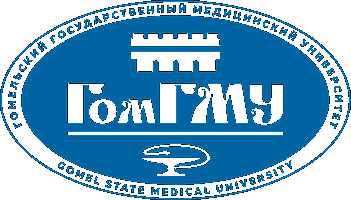Molecular genetic markers of the risk of tension-type headache and migraine chronization development
Открыть
Дата публикации
2021Автор(ы)
Kostiuk S. A.
Poluyan O. S.
Simirski M. V.
Marjenko I. P.
Метаданные
Показать полную информациюБиблиографическое описание
Molecular genetic markers of the risk of tension-type headache and migraine chronization development / S. A. Kostiuk [et al.] // Проблемы здоровья и экологии. – 2021. – Т. 18, № 2. – С. 147-154.
Аннотация
Objective: to identify the molecular genetic criteria of the risk of tension-type headache and migraine chro- nization development.
Materials and methods. The detection of the results for the determination of allelic variants was carried out by means of horizontal electrophoresis using a molecular weight marker. The determination of the gen- otypes of the polymorphic variants of genes was carried out using high resolution melting PCR analysis.
Results. Based on the performed molecular genetic studies, it has been established that the statistically signi cant (p < 0.05) risk factors of tension-type headache chronization are: the identi cation of the A-allele and AA-genotype of the DBH3 polymorphism of the dopamine-beta-hydroxylase gene DBH, as well as the identi cation of the G-allele and the GG-genotype of the Intron3SNP polymorphism of the preprotachykinin gene TAC1. It has been found that the statistically signi cant (p < 0.05) risk factors of migraine chronization are: the identi cation of the A-allele, GA- and AA-genotypes of the G29A polymorphism of the serotonin transporter gene SLC6A4, as well as the identi cation of the G-allele and the GG-genotype of the rs7793277 polymorphism of the preprotachykinin gene TAC1.
Conclusion. The detection of these polymorphisms of the dopamine and preprotachykinin genes in the blood serum increases the risk of tension headache chronization by 1.395–1.991 times; the risk of migraine chronization by 1.235–1.395 times. Цель: установить молекулярно-генетические критерии риска хронизации головной боли напряженного типа и мигрени.
Материалы и методы. Детекцию результатов по определению аллельных вариантов проводили методом горизонтального электрофореза с использованием маркера молекулярных масс. Определение генотипов полиморфных вариантов генов проводили с применением метода анализа кривых плавления продуктов ПЦР высокого разрешения.
Результаты. На основании проведенных молекулярно-генетических исследований установлено, что статистически значимыми (p < 0,05) достоверными факторами риска хронизации головной боли напряженного типа являются: выявление А-аллеля и AA-генотипа полиморфизма DBH3 гена дофа- мин-бета-гидроксилазы DBH, а также выявление G-аллеля и GG-генотипа полиморфизма Intron3SNP гена препротахикинина TAC1. Установлено, что статистически значимыми (p < 0,05) достоверными факторами риска хронизации мигрени являются: выявление А-аллеля, GA- и АА-генотипов полимор- физма G29A гена транспортера серотонина SLC6A4, а также выявление G-аллеля и GG-генотипа поли- морфизма rs7793277 гена препротахикинина TAC1.
Заключение. Выявление в сыворотке крови указанных полиморфизмов генов дофамина и препротахикинина увеличивает риск хронизации головной боли напряженного типа в 1,395–1,991 раза, риск хронизации мигрени — в 1,235–1,395 раза.
Ключевые слова
chronic tension-type headache
chronic migraine
serotonin
dopamine
preprotachykinin
chronization development risk
хроническая головная боль напряженного типа
хроническая мигрень
серотонин
дофамин
препротахикинин
риск развития хронизации
Коллекции
- Том 18, № 2 [24]
